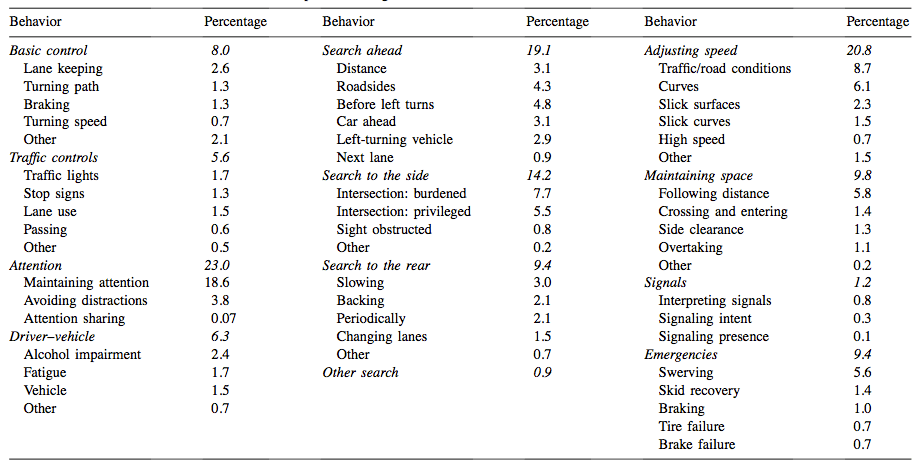Why Teens Crash
For those who are serious about online drivers education, an obvious goal is to decrease the number of teen collisions. This is indeed a lofty goal, albeit one that is fraught with misinformation and anecdotal evidence. A teen just died in a collision yesterday, which immediately snaps up back to reality. The headline reads something like “Speed Suspected In Teen Collision Death”, which is a terrible headline and may wind up killing more teens. The reason is that the real causes for the crash are not discussed and we do not raise awaresness of the true issues behind these crashes.

There is a great research paper, named "Young novice drivers: careless or clueless?" by McKnight & McKnight 2003, where two researchers did a post-crash analysis of approximately 1,000 novice driver crashes. Of all the studies I've read, this one really hits home in that a pair of highly qualified researchers spent the effort to really understand what is happening to our teens during their first year of driving.
The results are surprising. Speeding, defined as driving over the posted speed limit, was responsible for only 1.3% of novice crashes! Now let this sink in... If you read the newspapers, you would guess that 99% of collisions are due to “speeding” - not so! Virtually every headline I read states “speeding cited as crash cause”.
Here I'll go out on a limb and make a few assumptions about why “speeding” is such a “whipping post”:
- First off, its an easy target. The speed of a vehicle can be easily measured both before and after a crash occurs. By looking at factors such as skid marks, crash damage, the speed can be roughly determined and compared to the posted speed limit.
- There are limited “checkboxes” on the traffic citation form, which makes it easy for police officers to choose the reason for the crash. I'm sure police officers are under great time constraints and making the easy choice, rather than really pick through the issues, is much more convenient.
- The other causes for teen crashes are much more difficult to discern. How can we tell when someone was drowsy? Or when they were distracted? Or simply not aware of their surroundings?
The following is an excerpt from the McKnight study:

The above excerpt from the McKnight study, clearly points out the main causes of teen car crashes as follows:
-
“Attention”, which includes items like attention management, avoiding distractions, etc. was found to be attributable in 23% of teen crashes. That's nearly one-quarter of crashes!
-
“Search”, which is searching and recognizing hazardous road situations is cited in 19.1% of teen crashes
-
“Speed Adjustment”, which is adjusting speed appropriately, is cited in another 20.8% of teen crashes. It needs to be stressed that this category has nothing to do with “speeding”. Speed adjustment is setting the speed of the car appropriately for conditions, which could include curves, slick surfaces, traffic conditions, road conditions, etc
-
“Maintaining Space” is another item which is cited in 9.8% of teen crashes. This involves following too closely, side clearance, etc.
Combined, the four above items are cited as a cause in the vast majority of teen crashes. I'll point out again that speeding was cited in only 1.3% of these crashes. It should also be noted that alcohol impairment was cited in 2.4% of crashes.
Being involved in drivers ed for a number of years now has allowed me to read a number of studies on the topic of teen driving. Combined with the practical experience of seeing the results for training tens of thousands of new drivers over the years, has led me to believe the McKnight study is quite accurate. If we're going to have a real impact on crashes we need to stop using sound bites such as “Speed Kills” and discuss the real reasons behind teen crashes.
